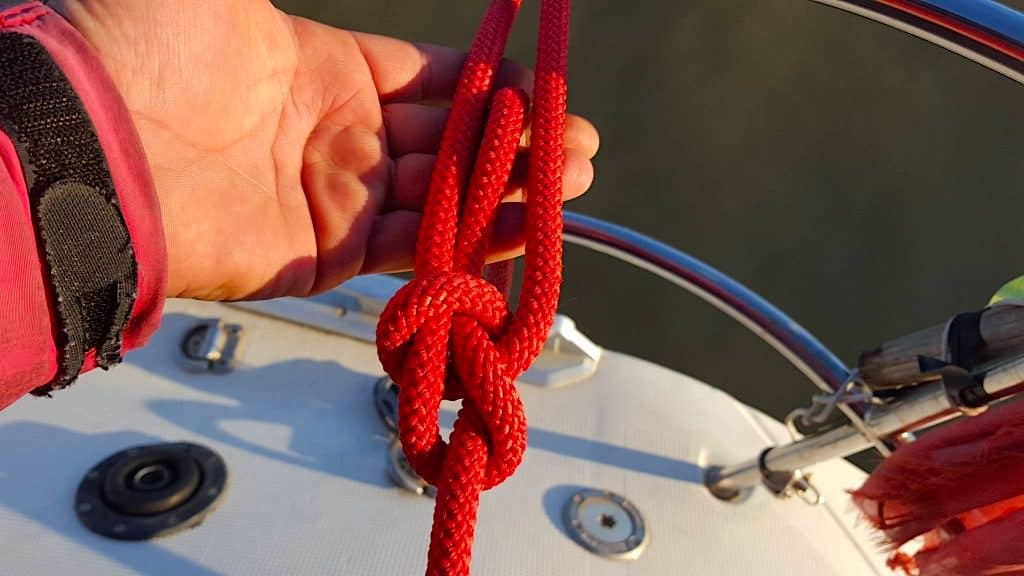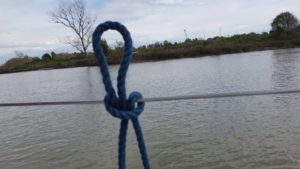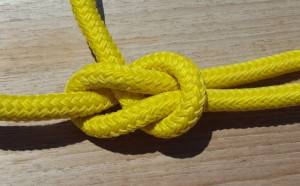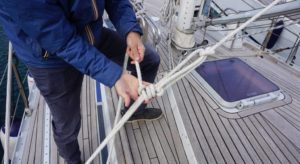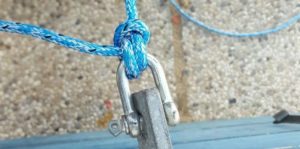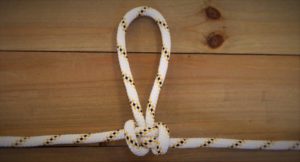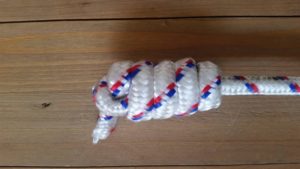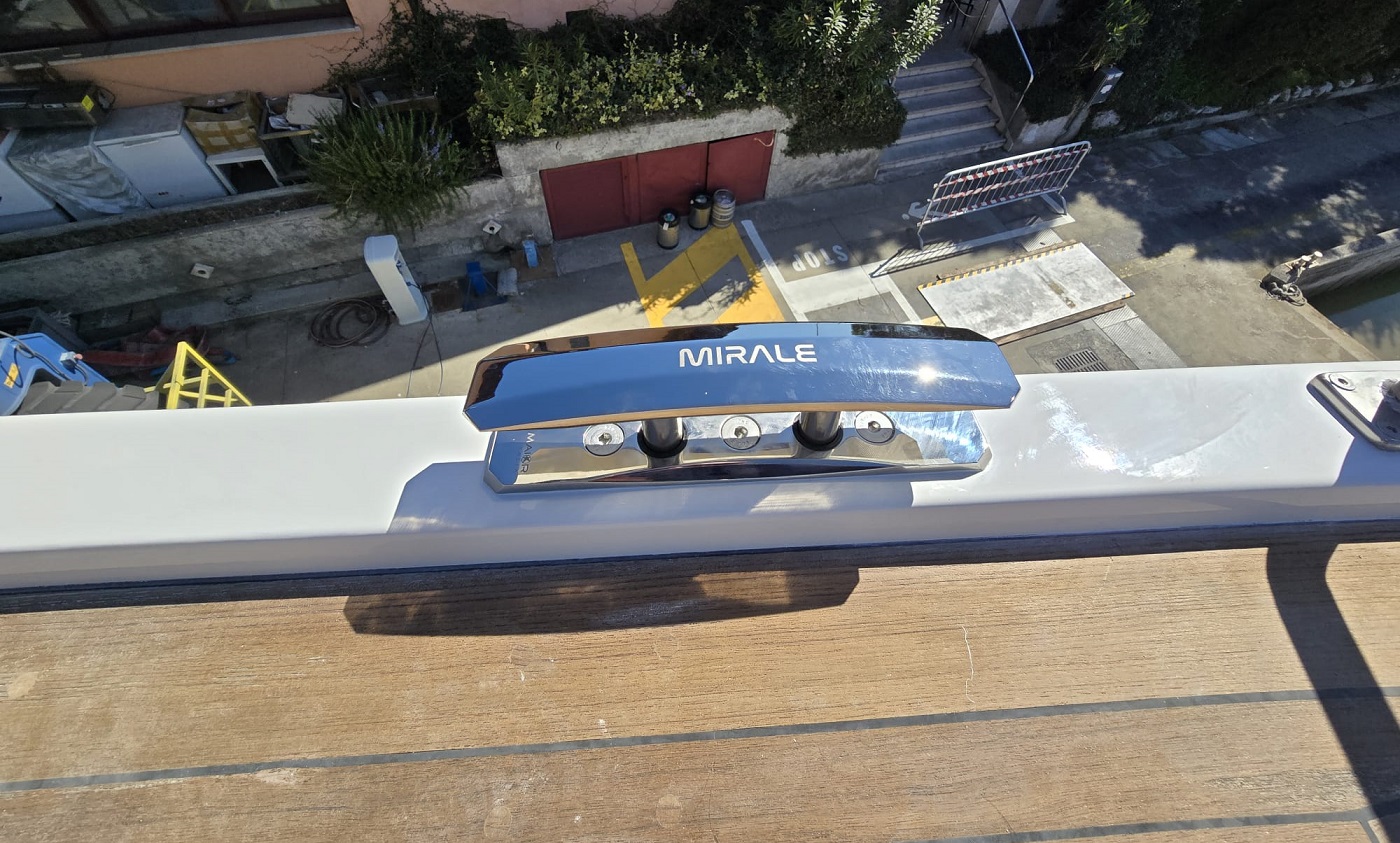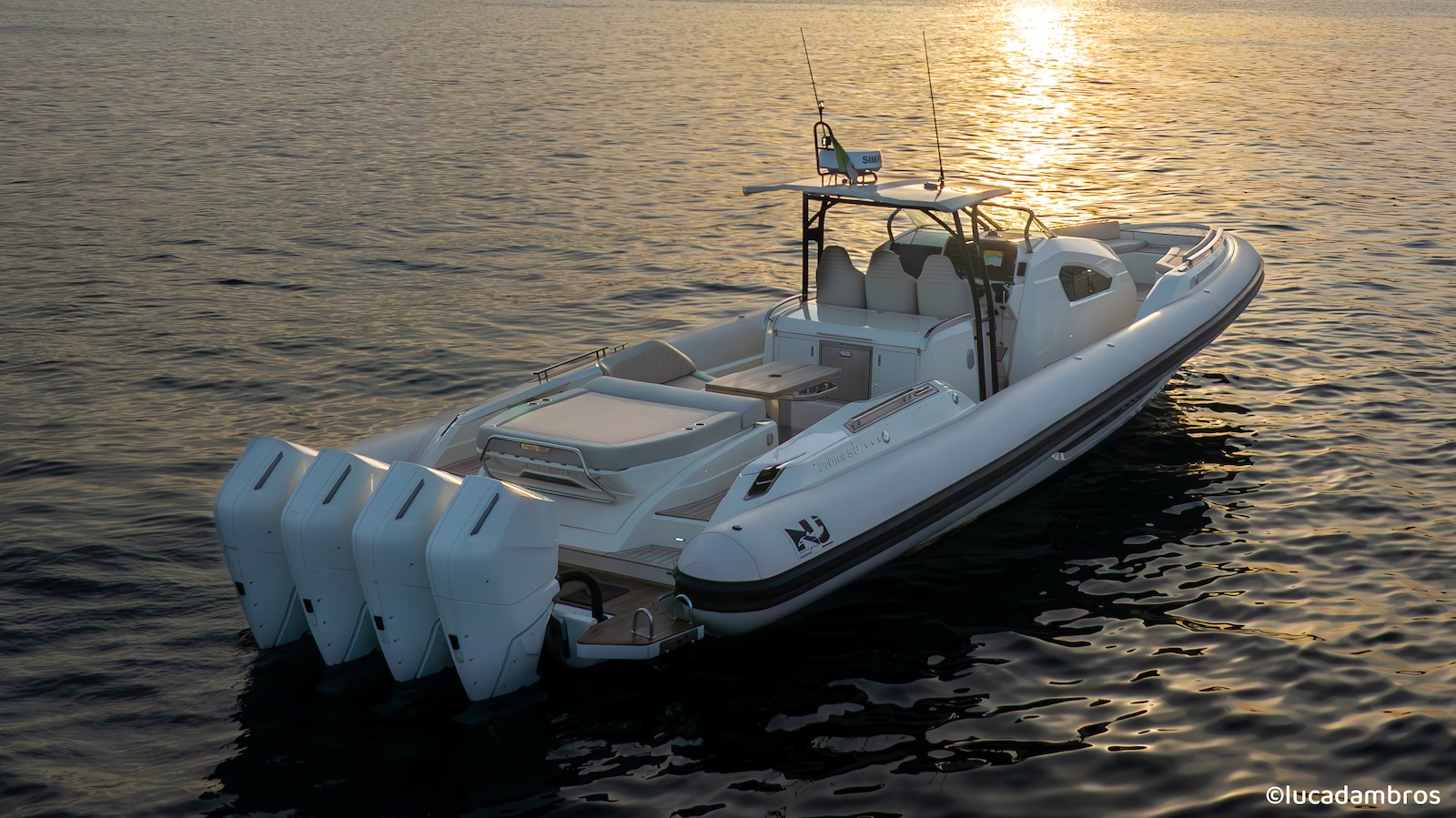The 10 knots every sailor should know
The 10 knots every sailor should know is a comprehensive guide that includes articles we have written over the years, illustrating how to masterfully execute the many essential knots used on a boat. This valuable resource, complete with photos and videos, makes life on board easier during your sailing adventures.
Below, you’ll find our personal ranking of the ten most important knots. By clicking on the link associated with the knot of your interest, you’ll be directed to a detailed explanation of how to tie it.
Happy reading, and good luck practicing!
1 – The Bowline Knot: the most common knot on a boat
The Bowline Knot is undoubtedly the most widely used knot on board. It has two key features: it creates an extremely useful and secure loop in various conditions, and it is very easy to untie, even after being subjected to heavy loads.
This knot offers exceptional strength under tension, making it ideal for mooring or securing halyards and sheets. However, it is not a universal knot, as it may loosen when not under tension.
Its main limitation is that tying it on a rope already under tension is, in our opinion, nearly impossible.
2 – Clove Hitch (the fender knot)
Useful, simple, quick to tie, and—importantly—capable of being tied even on a rope under tension. These are the hallmarks of the Clove Hitch, one of the most commonly used knots on a boat. It is particularly handy for securing or fastening various items on board, from fenders to coiled ropes.
While it is straightforward to execute, it is not always tied perfectly, as evidenced by the many fenders that can be seen adrift.
3 – Cleat Hitch: one of the most common knots for docking
Commonly referred to as the Cleat Hitch, this knot is more accurately described as the “cleat tie-off”, as most of our boats are equipped with cleats rather than bollards.
Strictly speaking, it may not even qualify as a knot, as it involves wrapping a line around a cleat rather than tying it into a conventional knot.
4 – Sheet Band
The Sheet Bend, also known as the Weaver’s Knot, is ideal for joining two ropes of different thicknesses.
This makes it perfect for attaching a flag to the halyard used to hoist it.
However, we wouldn’t recommend using this knot to join two ropes for mooring purposes, as the repeated tension and release could eventually cause the knot to come undone.
Link to Sheet Band Instructions
5 – Rolling Hitch
A stuck line, a mooring line to shorten, or an anchor line to relieve—there are countless reasons on a boat to transfer tension from one rope to another.
The methods attempted in such situations are often varied but frequently ineffective. Using a Rolling Hitch, however, is likely the most efficient solution.
Link to Rolling Hitch Instructions
6 – Pulley: knots on board to reduce effort
When a strong pull is needed, setting up a pulley on board is an excellent solution. It’s often used to secure something on deck, like a tender, or as shown in the photos, to fix the boom.
The process is as simple as it gets, but a common mistake occurs in the heart of the pulley: the loop through which the running end of the line (the free part) passes. Ensuring this is done correctly is key to effective use.
7 – Anchor Bend
The Anchor Bend does not adhere to one of the key characteristics of maritime knots: being secure while also easy to untie when needed.
Once tightened, this knot becomes very secure but essentially “permanent,” often requiring a knife to cut the rope if it needs to be replaced. For this reason, it’s considered a “disposable” knot. Its exceptional security places it within the family of so-called “binding knots”.
Link to Anchor Bend Instructions
8 – (Double) Carrick Bend, joining knots for boat lines
The Double Carrick Bend has been the most widely used solution along docks worldwide for centuries to join mooring lines.
Advantages? It’s easy to tie, doesn’t slip (even on wet ropes), offers exceptional holding power, and is easy to untie (though it can become very tight, it can always be loosened in the end).
Disadvantages? It tends to become quite bulky and works best with lines of a certain diameter.
Link to Carrick Bend Instructions
9 – Weaver’s Knot
With an intriguing name and relatively unknown to many, the Weaver’s Knot is both useful and easy to execute. It falls into the larger family of “loops, eyes, or nooses on a single rope,” as defined in the “bible” of knot tying, Clifford W. Ashley’s The Complete Book of Knots.
So, if you need to create a tackle to reduce tension, secure a package, or simply create a connection point on your line, the Weaver’s Knot is your go-to. It’s quick to tie, and unlike knots typically used by less experienced sailors, it can be untied even after enduring heavy loads.
Link to Weaver’s Knot Instructions
10 – Franciscan Knot: weighting knots
The Franciscan Knot falls into the categories of “weighting knots” or “stopping knots”.
It is very easy to tie and is often taught early on to young sailors, as it provides a sense of accomplishment when completed.
Link to Franciscan Knot Instructions
You can find videos of the knots to know on a boat in our new YouTube channel, under the “Tutorial” playlist.

